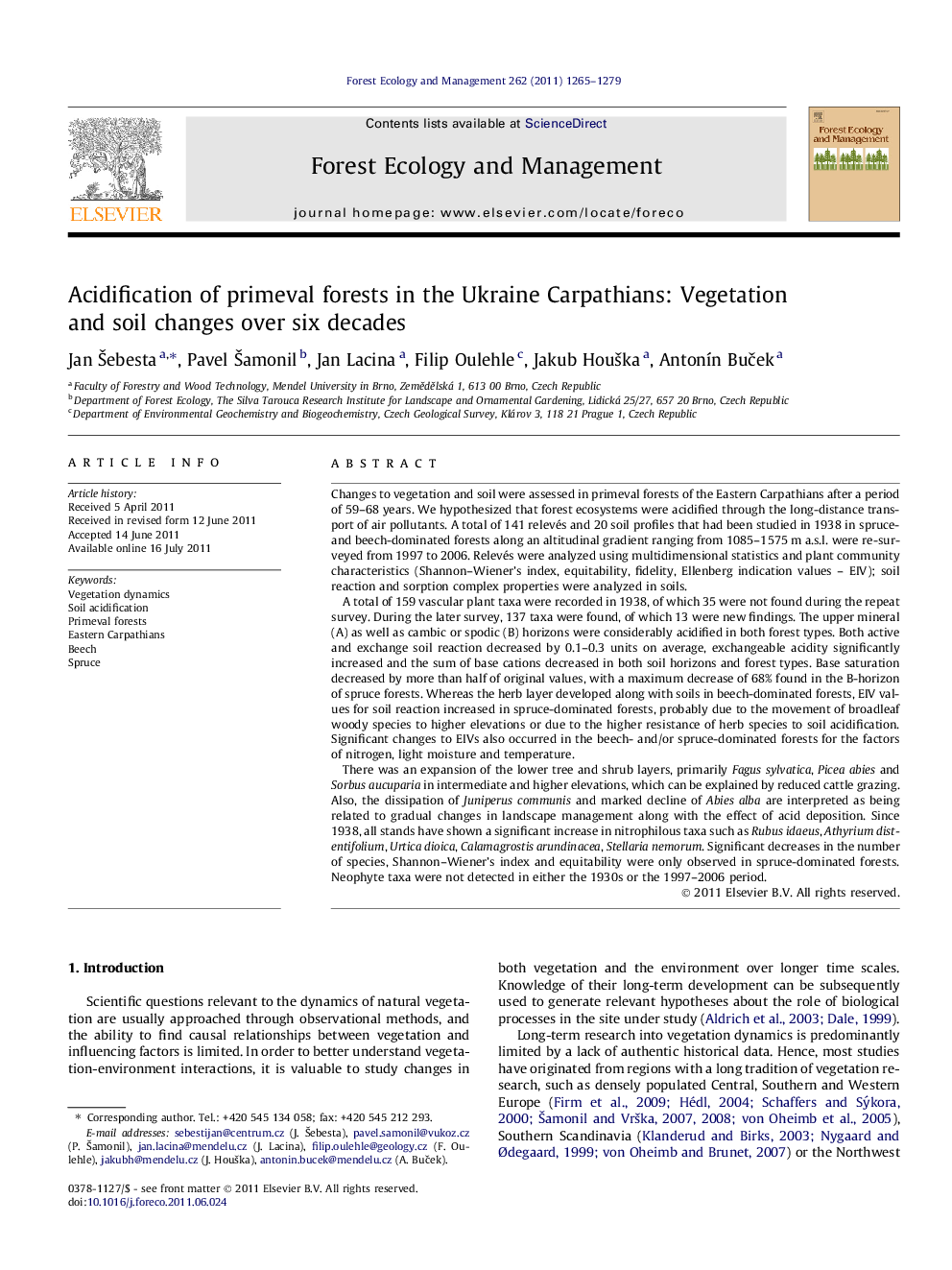| کد مقاله | کد نشریه | سال انتشار | مقاله انگلیسی | نسخه تمام متن |
|---|---|---|---|---|
| 88002 | 159276 | 2011 | 15 صفحه PDF | دانلود رایگان |

Changes to vegetation and soil were assessed in primeval forests of the Eastern Carpathians after a period of 59–68 years. We hypothesized that forest ecosystems were acidified through the long-distance transport of air pollutants. A total of 141 relevés and 20 soil profiles that had been studied in 1938 in spruce- and beech-dominated forests along an altitudinal gradient ranging from 1085–1575 m a.s.l. were re-surveyed from 1997 to 2006. Relevés were analyzed using multidimensional statistics and plant community characteristics (Shannon–Wiener’s index, equitability, fidelity, Ellenberg indication values – EIV); soil reaction and sorption complex properties were analyzed in soils.A total of 159 vascular plant taxa were recorded in 1938, of which 35 were not found during the repeat survey. During the later survey, 137 taxa were found, of which 13 were new findings. The upper mineral (A) as well as cambic or spodic (B) horizons were considerably acidified in both forest types. Both active and exchange soil reaction decreased by 0.1–0.3 units on average, exchangeable acidity significantly increased and the sum of base cations decreased in both soil horizons and forest types. Base saturation decreased by more than half of original values, with a maximum decrease of 68% found in the B-horizon of spruce forests. Whereas the herb layer developed along with soils in beech-dominated forests, EIV values for soil reaction increased in spruce-dominated forests, probably due to the movement of broadleaf woody species to higher elevations or due to the higher resistance of herb species to soil acidification. Significant changes to EIVs also occurred in the beech- and/or spruce-dominated forests for the factors of nitrogen, light moisture and temperature.There was an expansion of the lower tree and shrub layers, primarily Fagus sylvatica, Picea abies and Sorbus aucuparia in intermediate and higher elevations, which can be explained by reduced cattle grazing. Also, the dissipation of Juniperus communis and marked decline of Abiesalba are interpreted as being related to gradual changes in landscape management along with the effect of acid deposition. Since 1938, all stands have shown a significant increase in nitrophilous taxa such as Rubusidaeus, Athyrium distentifolium, Urtica dioica, Calamagrostis arundinacea, Stellaria nemorum. Significant decreases in the number of species, Shannon–Wiener’s index and equitability were only observed in spruce-dominated forests. Neophyte taxa were not detected in either the 1930s or the 1997–2006 period.
► Forest soils in the Eastern Carpathians considerably acidified after six decades.
► An expanse of nitrophylous taxa.
► Different responses of plant communities to acidification.
► The movement of broadleaf woody species to higher elevations and Abies alba decline.
► A higher uptake of base cations in the tree biomass after six decades.
Journal: Forest Ecology and Management - Volume 262, Issue 7, 1 October 2011, Pages 1265–1279